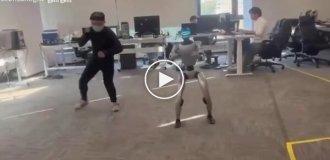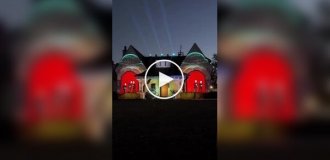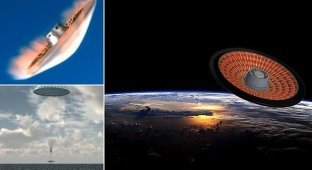NASA launches an airbag into space (7 photos + 1 video)
This week NASA promises to launch a huge inflatable into space a heat shield similar to a flying saucer. Agency specialists promise that someday he will help people land safely on Mars. 
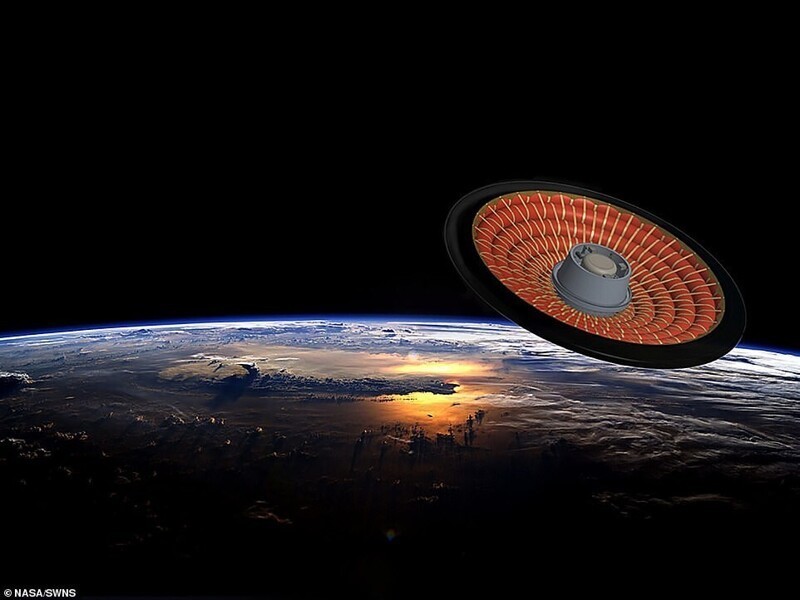
So that humans can one day land safely on Mars, engineers will have to invent a spaceship that can slow down to survive re-entry. In 2021 the rover NASA Perseverance remained unscathed after descending to the Red Planet from using a simple parachute. But the landing process for heavy ships, such as rockets with people on board, will be much more difficult. 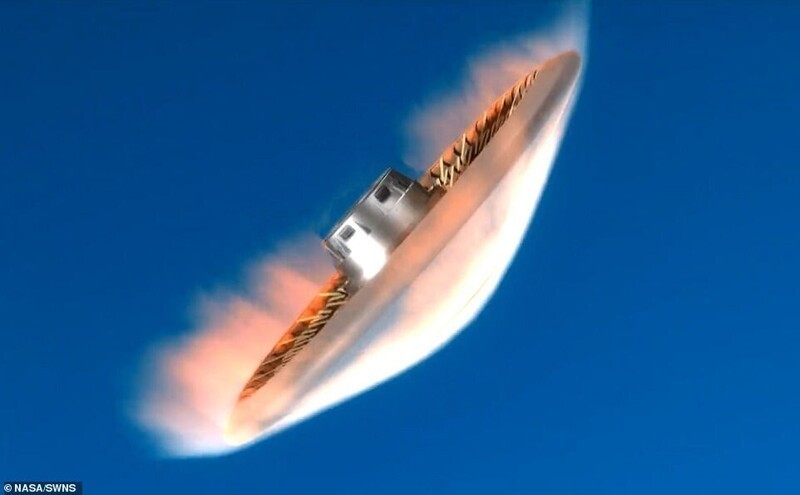
The US space agency proposes a solution to the problem landing in the form of a large inflatable heat shield, similar to a flying saucer that will be launched into low Earth orbit at this week. LOFTID inflatable retardant to be flight tested on low Earth orbit and descend back to Earth. NASA hopes that the test will demonstrate the ability of the heat shield act as a giant brake, slowing down future cosmic ship landing on Mars. The moderator is planned to be launched on United Launch Alliance Atlas V rocket on Wednesday, November 9 from the base the Vandenberg Space Force in California along with the meteorological satellite JPSS-2, which will be placed in a polar orbit. 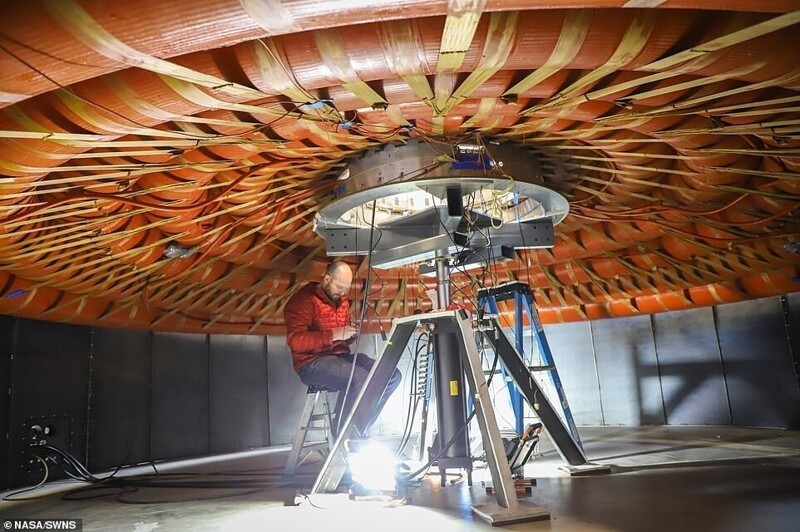
Once the JPSS-2 reaches orbit, the heat shield will inflate and will be transferred to an exit trajectory from low Earth orbit in order to to test its ability to slow down and survive reentry. If the test is successful, it could be decisive for NASA in organization of launching people to the Red Planet in the next decade. “This technology can support the landing of a crewed ship and large robotic missions to Mars, as well as help return to Earth heavy payloads,” the US space agency says. When we are talking about atmospheric destinations, including Mars, Venus, Titan and Earth, one of the key challenges facing NASA, is the delivery of heavy goods. In its current form, the current rigid aerodynamic shells are limited by the size of the rocket casing - its streamlined containment. NASA employees still remember the “seven minutes of horror" when the NASA Perseverance rover used a parachute, to descend to the surface of Mars. Radio signals sent from NASA and the lander require 10 minutes for any the party made contact, so after the ground team ordered the rover to descend, the device took control and made an epic journey all alone. Spaceship flew through the atmosphere of Mars, moving at a speed of 18,000 kilometers per hour, but after seven minutes he had to slow down to zero to land safely on the surface. 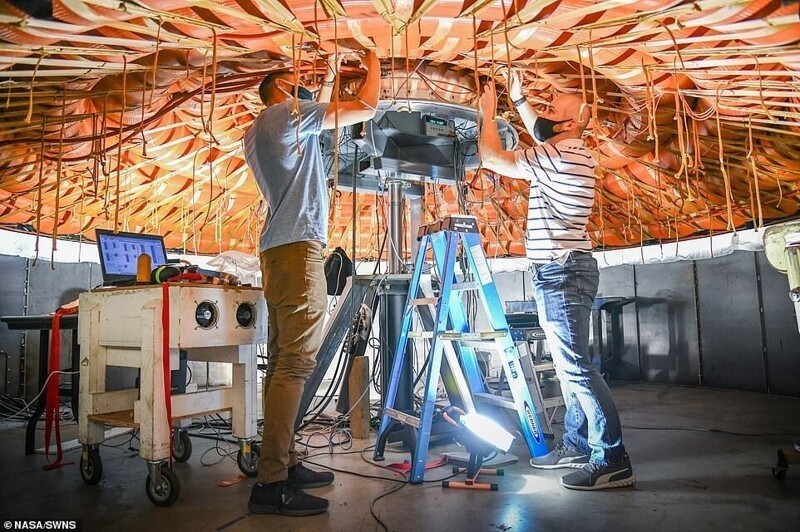
When a spacecraft enters the atmosphere, the aerodynamic resistance helps slow it down. However, the atmosphere of Mars is much less dense than the earth, which creates a serious problem for aerodynamic braking. "The atmosphere is dense enough to provide some resistance but too thin to slow down spacecraft as fast as in the Earth's atmosphere," explained the NASA. 
The agency solved this problem with an 8-width heat shield. meters, which will be deployed in the upper atmosphere, which will allow spacecraft to slow down earlier, while experiencing less intense heating. It will become the largest aerodynamic projectile with flat body ever to pass through the atmosphere.
In the atmosphere, it will have to slow down from hypersonic, more than 25 times the speed of sound, to subsonic flight, at speeds less than 1000 km/h. 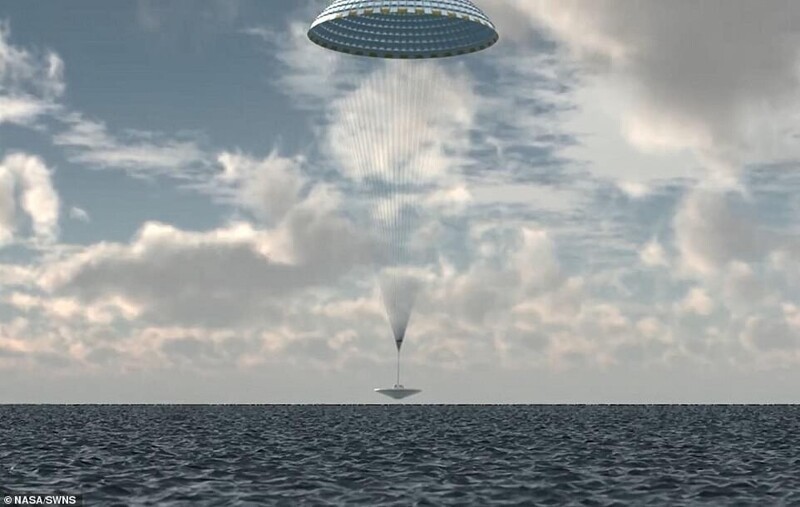
Throughout the flight, the real-time beacon will periodically transmit flight data while sensors and cameras will collect more complete information that will be stored in the internal data logger, as well as a removable data logger that will dropped afterentry into the atmosphere.
LOFTID will deploy the parachute to provide a soft landing, and will be taken from the Pacific Ocean. According to NASA experts, the introduction a new way of boarding could 'revolutionize' the way we ship payload to planetary atmospheric destinations.
According to them, inflatable moderator technology can scale for both manned and large robotic missions to Mars.








